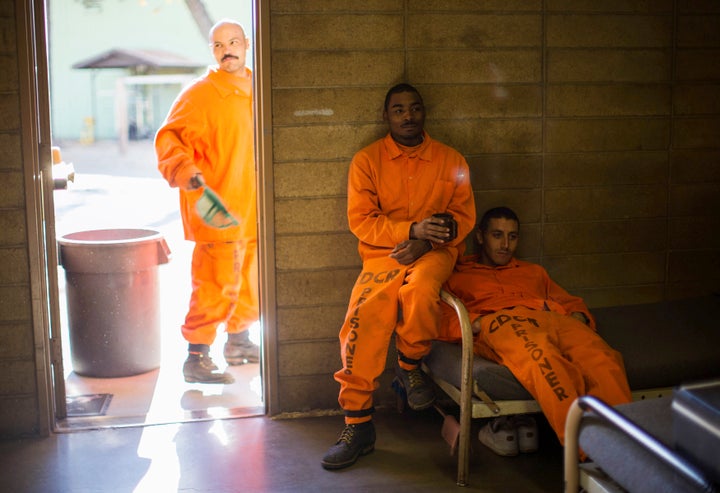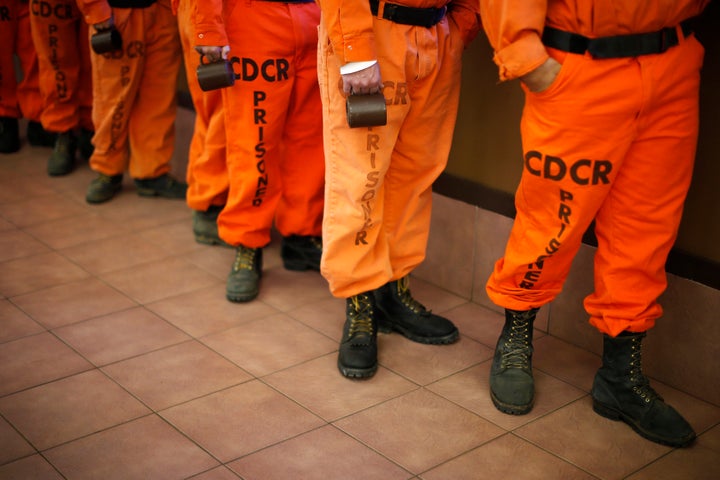
Last Sunday, on the anniversary of the Attica prison riot, a nationwide prison strike ended. Billed as likely the largest prison work stoppage in the country’s history, it started on Aug. 21, the anniversary of the assassination of Black Panther Party field marshal and prison activist George Jackson. For two weeks, inmates in 17 states planned to refuse their work assignments.
Because of the lack of transparency in the prison system, it’s not clear how many incarcerated people actually joined the strike. No matter how many people participated in the collective action, the strike succeeded in raising awareness of the conditions prisoners face every day and the widespread exploitation of prison laborers.
But the economic exploitation of prisoners doesn’t end when they’re released. In 49 states, inmates are charged for the costs of their own incarceration.
The way this works varies. In some states, formerly incarcerated people are sent bills, and in others they are charged fines (sometimes called legal financial obligations, or LFOs). Some states collect the cost of incarcerating someone through windfall statutes, grabbing any inheritances, lottery winnings or proceeds from litigation.
“In 49 states, inmates are charged for the costs of their own incarceration.”
There’s no way to pay these bills ahead of their due dates or work these charges off while in prison, no matter how hard you work. No inmate can earn enough inside to cover the costs of their incarceration; each one will necessarily leave with a bill. The state of Florida, which pays inmate workers a maximum of $0.55 per hour, billed former inmate Dee Taylor $55,000 for his three-year sentence. He would have had to work 100,000 hours, or over 11 years nonstop, at a prison wage to pay for his three year incarceration. Even as a free man working at Florida’s minimum wage of $8.25, he would have to work more than 6,666 hours ― more than three regular work years ― and not spend a penny on anything else to pay it back. These debts are impossible for the even hardest-working people to pay off.
Most people enter prison poor, and half of formerly incarcerated people are unemployed six months after they leave custody. Those who find jobs after prison will earn very little; the median income for people within one year of their release is $10,090 ― only 55 percent had any earnings at all. This makes paying any type of bill a challenge. The bills for one’s prison time compete with active and essential living expenses like housing, food, utilities and transport. Ex-offenders in the United States owe about $50 billion for various criminal justice costs like pretrial detention, court fees and incarceration costs. It’s estimated that as much 60 percent of a formerly incarcerated person’s income goes toward “criminal justice debt,” even for those who have ostensibly paid their debt to society.
These debts can make it even harder for a returning citizen to rebuild their life after incarceration, because in 46 states, failure to repay them is an offense punishable by yet more incarceration. A Georgia man named Thomas Barrett pleaded guilty to shoplifting a $2 can of beer and was fined $200 and sentenced to probation, supposedly so he could avoid jail. That was a futile hope, since he was eventually incarcerated after he failed to pay over $1,000 in fees attached to that $200 fine. In Rhode Island from 2005 through 2007, failure to pay court debt was the most common reason that individuals were incarcerated, which means that, in a state that routinely spends around $200 million on corrections every year, the most common reason for incarcerating people there was something other than crime.

In 20 states where probation and parole are privatized and profit-driven, the problem is worse. Additional supervision fees explode the amount of money that a probationer owes, and the likelihood of violation ― and reincarceration ― skyrockets. In Florida, probationers can be charged a 40 percent collections surcharge on their debts to the state.
Because these private companies are exempt from freedom of information requests, we don’t know the true value of the for-profit corrections industry. Even a conservative estimate would suggest that they make untold millions while American taxpayers foot the bill for another round of imprisonment. In Georgia alone, private probation is a $40 million-a-year industry. The practice of charging poor defendants for the cost of their punishment ends up punishing people outside of prison repeatedly while benefiting only the supervising companies. When an Alabama circuit court judge called the private probation system a “judicially sanctioned extortion racket” he wasn’t whistling “Dixie.”
The “offender funded” justice model may appeal to those who think that prisoners should absorb the cost of their punishment. But many inmates already do that through prison labor. As the recent strike highlighted, prisoners do much of the work inside prisons, for low wages or no wages at all. For instance, in Cañon City Correctional Center in Colorado, inmates in prison labor programs generated $57 million in revenue for the state. It’s estimated that every incarcerated worker there saves taxpayers $5,000. Yet, even those workers are often made to pay the costs of their own incarceration.
If states insist on billing inmates for their own incarceration, prison workers should at the very least be able to start paying those bills while in prison. And if states insist on paying prison workers paltry wages, they should stop asking them to keep paying once they’re released. The current system of “offender funded” justice means that inmates pay their debt to society twice, and those who do prison labor pay three times over.
For many years, the symbol of justice in the United States has been a balanced scale. These days, the more accurate representation would be a cash register.
Chandra Bozelko is the vice president of the National Society of Newspaper Columnists and writes the blog Prison Diaries. Ryan Lo is a Soros Senior Justice Fellow. Both are formerly incarcerated.